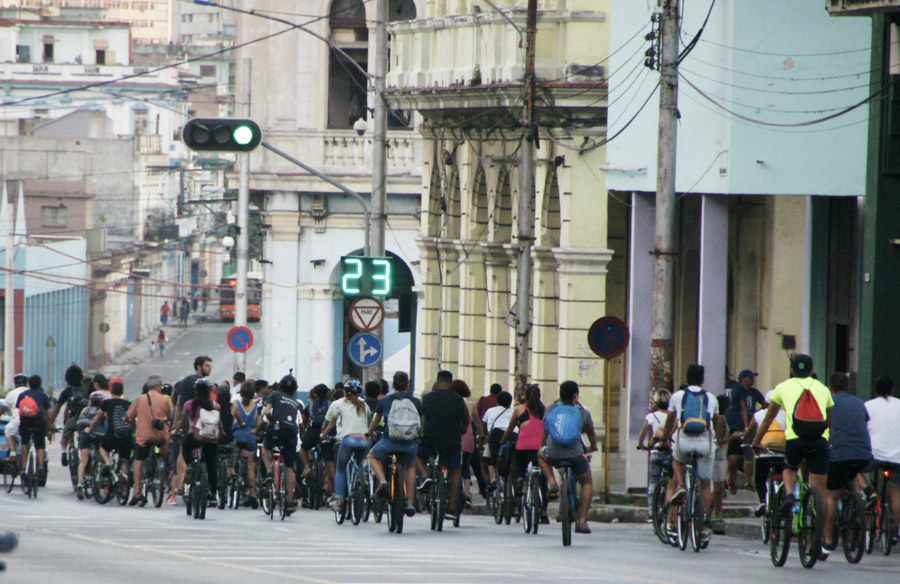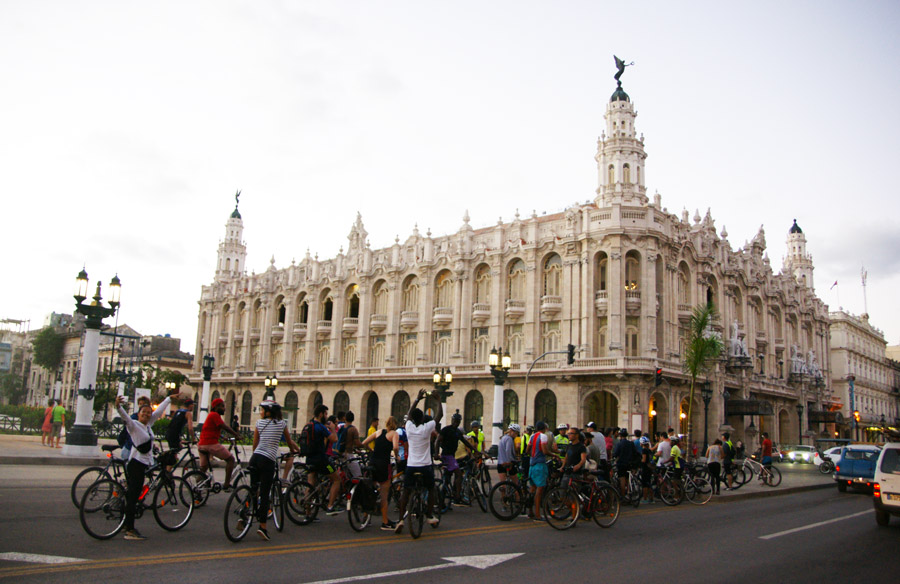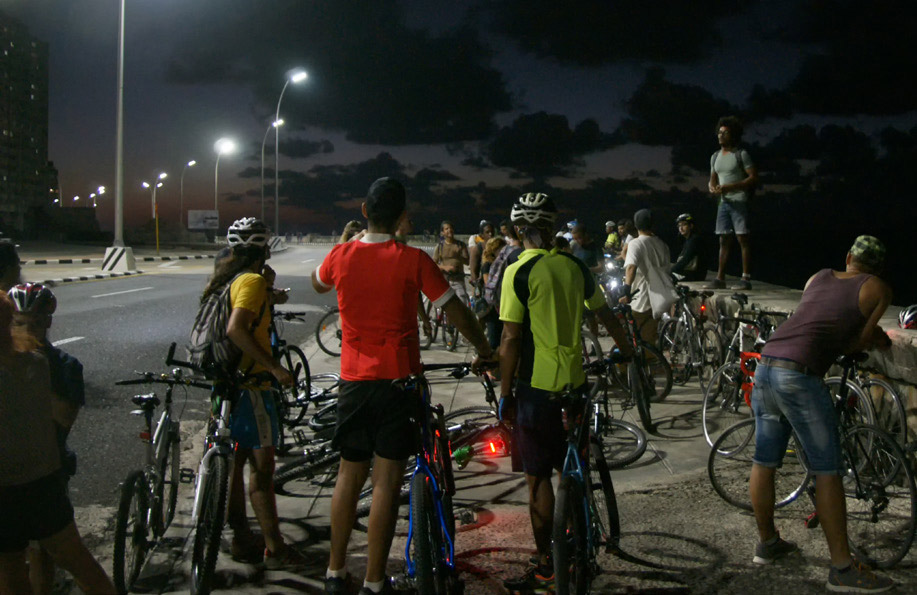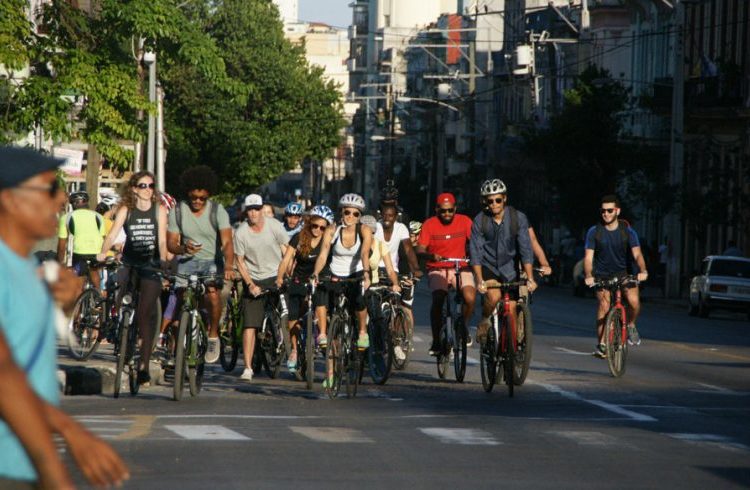To move easily the best speed is that of a bicycle. It beats the slowness of walking and at the same time it does not sacrifice the experience of living a place, of looking around without vertigo. A car’s speed swallows the details, everything goes by fast, the landscape is fleeting. Julio Cortázar, who celebrated the “simple spontaneity of bicycles,” described it as a “docile being and with a modest conduct.”
In the Cuban capital there are some who are convinced of all this, and want to convince many more. A few months ago they started “Bicicletear La Habana” (Cycling through Havana), which is the name of the event that the first Sunday of every month summons all those who want to tour the city, free of charge, with their own or someone else’s bicycle.
With the crisis of the 1990s the bicycle became the most useful means of transportation for Cubans (for the great majority the only one). Those of us born in the late 1980s or the last decade of the 20th century had an adapted small seat on the bicycles of our parents, who with very little spare energy in their bodies traveled long distances on them, to go to work or to get the scarce supplies for the harsh daily life. It’s true that there were times when we went to the beach, and eventually some of us had our own small bikes.

To the extent that transportation overcame the worst moment of its collapse, at least in the capital, its use decreased a great deal. In recent time, moreover, using it would suppose a triumph over the tyranny of those old American cars used as taxis called “almendrones,” which outline their own route and set their own prices, and the insufferable precariousness of the buses. Without leaving out the incomparable adrenaline of going down a hill, the breeze on your face, your hair in the wind, and let’s hope not much sun.
The bicycle is returning, this time not as a last resort to move around and to save money, but rather as part of a lifestyle that is an alternative to the automotive vehicle, an environmental and cultural movement for the city which also supposes inventing a pace to live it, a speed and a tempo.
“We need more bicycles,” says Yasser González, promoter of the monthly tour and a cyclist for nine years. “They said I was crazy, that the heat, that the threatening cars,” he says, remembering two of the principal reasons that make people abstain: the tropical climate and the lack of guarantees for the cyclist’s safety on the road. Statistics reveal that most of the fatal victims in traffic accidents are none other than cyclists.

Cycling through Havana proposes giving a boost to “a socialist and revolutionary transportation”: collective, democratic and alternative. Properly speaking it is not an activism nor do its participants say it is, but it suggests a spontaneous and collective practice, summoned and organized by common citizens who propose an option.
“Come with your own bike or ask someone to lend you one to go on a fun tour of Havana, to carry out physical activity and promote the use of the bicycle together with your friends, strangers, pro cyclists, guava pastry sellers and those bored at home,” Yasser invites.
The tour will follow “a route at times planned, at others improvised,” generally leaving from the Mártires Park on San Lázaro Street, on the corner of Infanta. The first stretch crosses Centro Habana, where there are pot holes that equally punish everyone and which the cyclists will avoid, always having fun (another advantage of the group tour). In the narrow streets of the old city the sidewalks are also very narrow and people are used to walking along the street or remaining seated at the entrance to their homes. The caravan will always have a lot of public, of all ages and looks, a Cuban public. Through Old Havana they usually get to the Train Terminal, and from there starts the tour along the coast, all along the Malecón seaside drive, the tour’s favorite stretch for most of the cyclists in this event, which already comprises several dozens of enthusiasts.

A list of rental outlets is suggested for those who don’t have a bike and who aren’t able to get their “stingy neighbor to lend them one.” At least seven businesses in Havana rent bikes. Two of them make a special price offer for the event, which is free, and which also promotes these stores or rental outlets.
Where do they come from? How do they find out? Cycling through Havana has created a network of contacts through Facebook. Each edition has its convocation, whose impact has been increasing month after month. At the end of each tour the pictures taken, during the spare moments when not pedaling, are published in Habana Pedalea/Bikes. The virtual accompaniment remains before, during and after each Sunday.
“The police patrol says on the loudspeaker that we use only the right lane,” says the description of the photo of the most recent tour.










